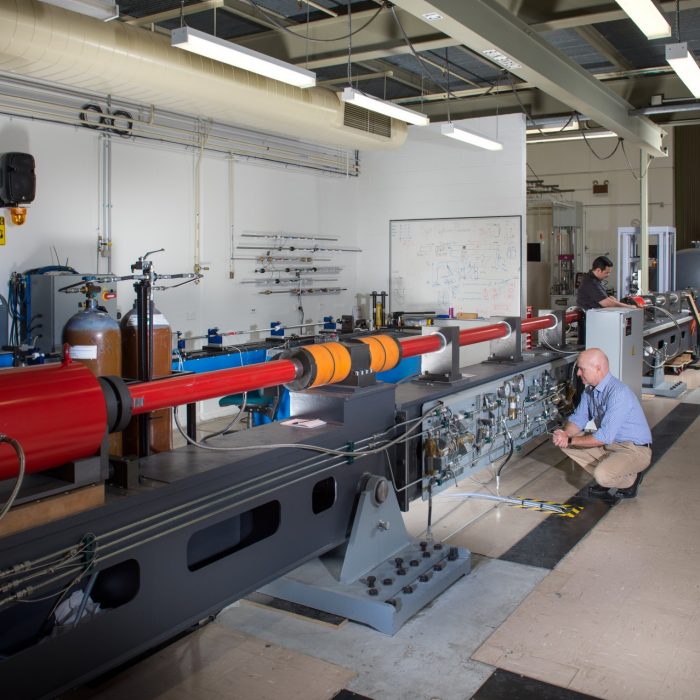Impact dynamics

The challenge
Collisions can be dangerous and expensive. Every year, thousands of people lose their lives through vehicle collisions, bicycle accidents, industrial accidents and sporting injuries. Further, the Australian armed services and law enforcement officers deserve to be supplied with the very best in protective equipment, whether that’s body armour, armoured vehicles, or systems designed to mitigate against impact and explosions.
Very rarely is there a solution that’s relevant to all problems. In Impact Dynamics, we can study collisions that are only a few metres-per-second right through to several thousand metres-per-second. Studying collisions that occur at very high (or hypersonic) velocities comes with their own unique challenges in that shock waves are formed on impact and materials are compressed by extreme local and temporal pressures. The collision process only lasts for a fraction of a second (and sometimes a fraction of a microsecond), which requires very fast diagnostics to understand what is going on.
The solution
The Impact Dynamics group is committed to developing innovative solutions to protect humans and expensive assets from the damage caused through impact. Studying the penetration mechanisms of projectiles through targets, or by understanding how shock waves propagate through a material medium, is central to this effort. Studying the natural world can also assist, and we’re currently using biomimicry to develop novel materials and structures that can mitigate the effects of collisions.
We use a variety of guns in conjunction with laser-based diagnostics and high-speed visualisation techniques to understand how structures behave under impact loading conditions. Additionally, computational modelling provides a useful way of underpinning our understanding of the physics of processes. This also provides us with insight into how to measure properties for material models that are used in such codes.
The impact
We have worked on a range of structures on behalf of several research organisations, private industry and defence organisations to understand how structures can be developed and improved upon to provide protection. These have included porous energy absorbing structures, highly constrained armour targets, auxetic systems and novel composite structures – all of which can be developed for a specific type of threat.
Ultimately, the research we do is designed to save lives and protect assets and infrastructure. The loading conditions can be relatively low – such as a bicycle collision – to extreme, such as a satellite that has been exposed to a hypervelocity impact, or a bunker that has been attacked by a hypersonic missile. Throughout this range of collisions, we can provide innovative solutions and testing facilities.
“Studying the natural world can also assist, and we’re currently using biomimicry to develop novel materials and structures that can mitigate the effects of collisions.”
Professor Paul Hazell





